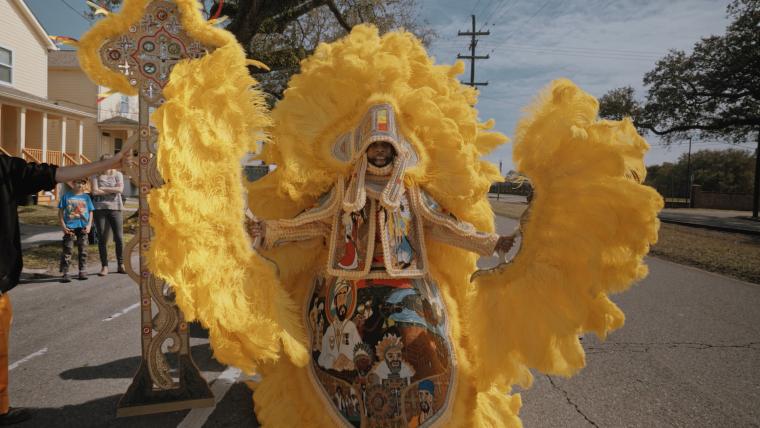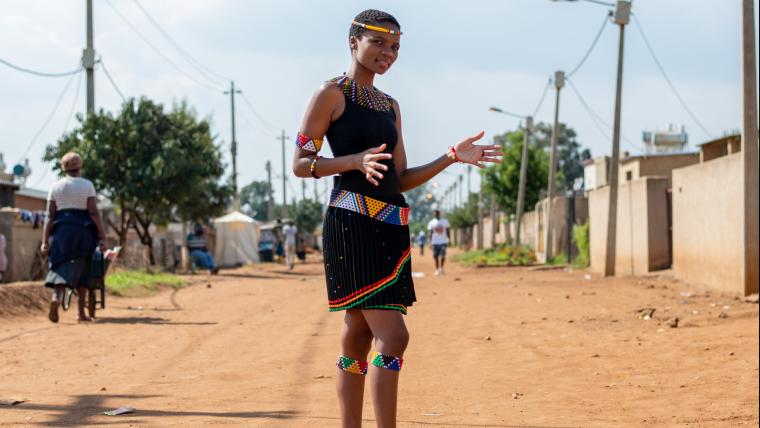
Meet the Big Chief beading his ancestry into Mardi Gras Indian suits
Mardi Gras Indians are the pride of New Orleans. This community of African Americans celebrate the city’s 200-year-old culture of Black Masking, in which they form tribes and battle over the extravagance of their costumes. Their name and outfits pay homage to indigenous Americans, who accepted enslaved people into society and offered them refuge. Demond Melancon is a contemporary artist who has been sewing Mardi Gras Indian suits since he was 14. Today, he’s rewriting history with beads, feathers, and sequins.
Melancon dabbled in drugs in his youth, but his passion for Black Masking led him to focus on honing his talent. “In my environment, everyone was doing crazy stuff,” he says. “Amongst the beadwork of the Mardi Gras Indians I discovered that I was more than my circumstances.” After being a member of the Seminole Hunters tribe for over 15 years, the elders of the community made Melancon the Big Chief of his own group, the Young Seminole Hunters. They prepare suits, songs, and performances to parade on Mardi Gras, Saint Joseph’s Day, and Super Sunday.
With every new year comes a new costume. Different members of the group have their own role to play and dress according to their purpose. The suits are colossal, elaborate, and vibrant. It can take Melancon over 4 000 hours of sewing and up to a million glass beads to make his suits. He is strategic in using the smallest beads, at just two millimetres, to make the detail as intricate as possible. Each one of the outfits has a story to tell. In 2018, Melancon created a suit titled Ethiopia, which featured images of Empress Menen Asfaw and Haile Selassie, the last emperor of the country. In other works, Melancon has incorporated images of Harriet Tubman, legendary prince Bras-Coupé, and his own grandmother.
On Mardi Gras day, Black Masking tribes fight over the grandeur of their gear. “We challenge each other with a needle and thread to see who’s the best,” Melancon says. With this practice, he hopes to inspire the youth to follow in his footsteps and avoid negative influences. Melancon’s suits tell tales of independence and overcoming, and have been exhibited in the Victoria and Albert Museum in London, Art Miami, and the Arthur Roger Gallery in New Orleans. In honouring heritage, Melancon is building on it. “I make the world what I want it to be, which is beautiful,” he says.






























Please sign in to leave a comment